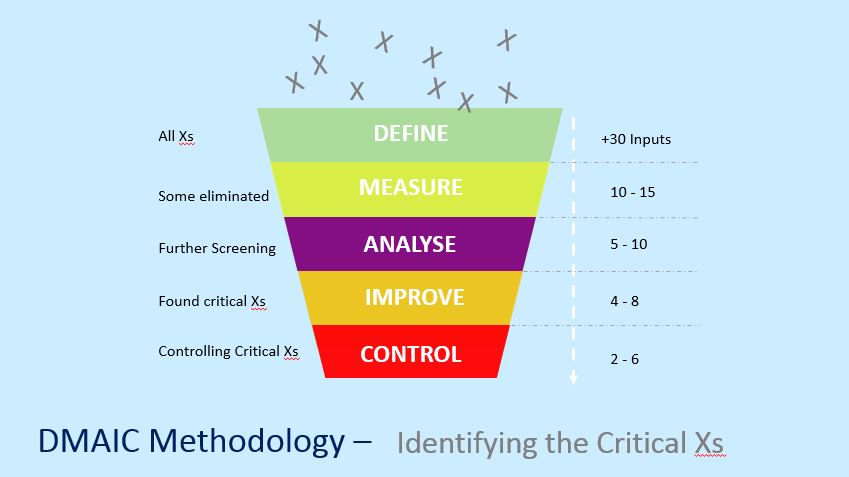DMAIC methodology is another problem-solving framework that’s designed to hunt out and eliminate problems.
Very similar to its cousin, the PDCA cycle, it has its origins from TQM movement.
It’s used extensively when applying Six Sigma to process improvement, but the DMAIC methodology is used by many also as a way of following improvements in a structured way.
Sometimes without even using Six Sigma at all.
In my experience, it’s just as good as the PDCA approach. Some would say better.
It allows you and your teams to be competent problem solvers.
And to avoid the typical work around, short term solutions that most organisations follow.
The 5 Step DMAIC Methodology
The DMAIC methodology is structured around the DMAIC acronym.
It stands for:
Define: Define the problem or project. Get to grips with exactly what the current state is and what the intended improvement outcomes should be.
Measure: Measure the process so you can see what the impact of the problem is. Define what you’re going to measure, so you can understand the problem in greater detail.
Analyse: Analyse the process to understand the root cause(s) and the reasons for defects.
Improve: Improve the process by eliminating the root causes.
Control: Control the process by standardising the new way of working. Ensuring the problem doesn’t come back.
DMAIC Methodology Cuts Through the Noise
When starting the journey of improving, you’re faced with many X’s. These X’s are a multitude of factors that could be causing the process to behave incorrectly – be it delivery problems, defects and any other variation to plan.

DMAIC Methodology – Critical Xs
When you walk through the DMAIC roadmap, you’re effectively gaining more knowledge about the process, using data and analysis.
And as you do, you start to dismiss possible root causes (or X’s), and filter more out, using data and theories.
This process is repeated, until you get to the real root cause of the problem and have proven it through data and experimentation.
Feedback Loops
Although the DMAIC methodology is linear in its approach, it’s there to merely provide structured problem solving. This ensures the project leader tackles the problem in a standard and detailed process every time.
Consistency and structure is the name of the game in the DMAIC methodology.
It’s the only real way to ensure you eliminate problems, as opposed to artificially working around them…. And merely patching things up.
That’s why the analysis and experimentation may mean you go back and forth through the DMAIC methodology, to ensure the right root cause is found and eliminated.
For instance, you may be at the analyse phase, but you have to return to the measure phase to understand something new.
You might even be at the improve phase… But may have to return to do more analysis and experiments to ensure that what you’ve identified is the actual root cause.
The DMAIC Methodology and Typical Tools
Here’s the DMAIC Methodology in more detail, when used to conduct process improvements.
Notice the heavy reference to statistical tools. A lot of people get hung up on trying to implement all the 6 sigma tools.
But the bottom line is to eliminate a root cause(s) to a problem.
If you can follow DMAIC and eliminate the problem, using 10% of the tools, then job done!
